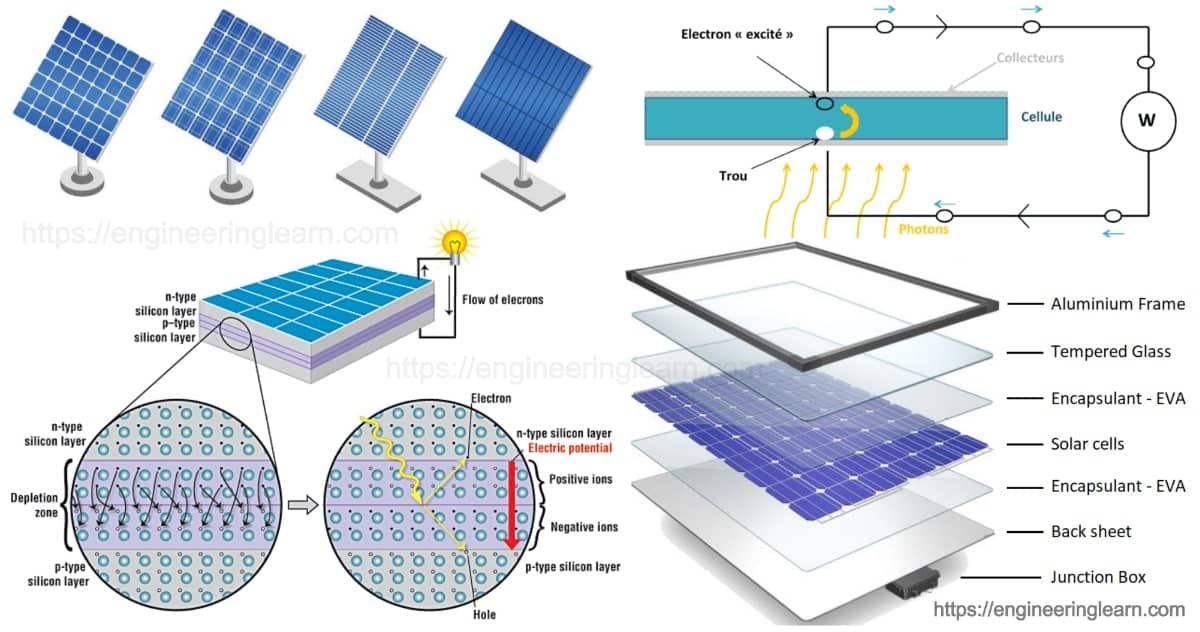Solar Systems Things To Know Before You Buy
Wiki Article
All about Solar Systems
Table of ContentsThe Solar Systems IdeasAbout Solar SystemsThings about Solar SystemsSome Known Factual Statements About Solar Systems
There are three various sorts of solar panels: monocrystalline, polycrystalline, as well as thin film. Monocrystalline photovoltaic panels are very reliable and have a smooth style, yet come with a greater price point than other solar panels. Polycrystalline photovoltaic panels are cheaper than monocrystalline panels, however, they are much less effective and also aren't as visually pleasing.Nowadays, there are several varieties of monocrystalline solar panels on the market to choose from., are ending up being an increasingly popular monocrystalline option.
Since monocrystalline solar batteries are made of a single crystal of silicon, electrons have the ability to quickly stream throughout the cell, raising overall performance. Not just do monocrystalline panels have the greatest efficiency scores, they usually additionally have the greatest power ability rankings, too. A lot of monocrystalline panels on the marketplace today will certainly have a power output score of a minimum of 320 watts, yet can increase to around 375 watts or greater!.
Due to the fact that polycrystalline cells have several silicon cells, the electrons can stagnate as easily and consequently, lower the efficiency of the panel. The lower performance of polycrystalline panels also implies they tend to have a reduced power outcome than monocrystalline panels, generally ranging in between 240 watts as well as 300 watts.
Not known Incorrect Statements About Solar Systems
4% efficiency with thin movie cell prototypes but. In order to fulfill your power needs, you would need to set up even more thin movie panels over a big area to create the exact same quantity of electrical energy as crystalline silicon solar panels. This is why slim film photovoltaic panels don't truly make good sense for residential installations where room is limited.The temperature coefficient informs you just how much the power result will decrease by for each 1 * C over 25 * C the panel obtains. The basic temperature coefficient for mono as well as polycrystalline panels generally falls somewhere in between -0. 3% and -0. 5% per * C. Thin movie panels on the other hand, are around -0.
In truth, with some thin movie panels, it's difficult to even see the specific cells within the panel. They likewise tend to have much less electrical wiring and busbars, indicating there's less white area. Nonetheless, since they are so inefficient, you would certainly require to cover your whole roof covering in thin movie panels - which might or may not be your style.

Some suppliers have worked around this with black packing or forming the cells differently, however these aesthetic changes can impact both the price as well as efficiency of the panels. In general, monocrystalline panels still look smooth, yet they're a little bit a lot more pronounced than slim movie panels. solar systems. The process in which polycrystalline solar cells are manufactured triggers the cells to have a blue, marbled appearance.
The 30-Second Trick For Solar Systems
If you're on Website a tight spending plan, polycrystalline panels may make even more feeling for you. We do not recommend slim movie solar panels for household installations - their performance and resilience do not make the affordable worth it, and also it's not likely you'll have nearly adequate area to set up the number of slim film panels you would certainly need to cover your home electrical energy use.Since they are made from pure silicon, they can be readily recognized by their dark black shade. The usage of pure silicon likewise makes monocrystalline panels the most space-efficient as well as longest-lasting among all 3 photovoltaic panel types. However, this comes with a cost a great deal of silicon is squandered to produce one monocrystalline cell, in some cases reaching over 50%.

Amorphous silicon panels (A-Si) derive their name from their unformed nature. Unlike mono-and polycrystalline solar cells, the silicon is not structured from this source on the molecular level.
7 Simple Techniques For Solar Systems
50 $0. 50 $0. 50 Note that these numbers do not include the price of setup and also labor.
This indicates that thin-film panels can be a great option for hotter settings or places that experience more sunshine throughout the year. The updated International Building regulations of 2012 calls for helpful site photovoltaic panels to match the fire ranking of the roofing system where they are installed. This is to guarantee that the modules do not accelerate the spread of flames in case of a fire.
Report this wiki page